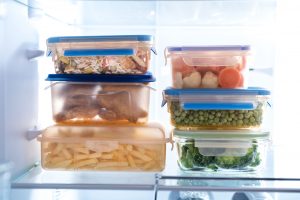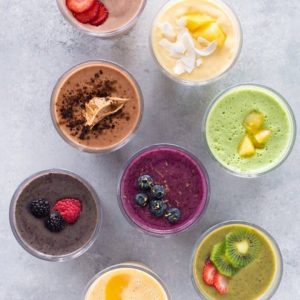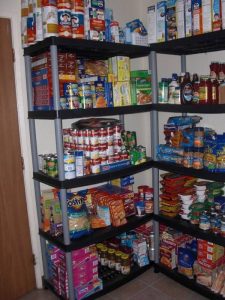You’ve heard it before: “If you fail to plan, you plan to fail.” And it’s true. The easier you make sticking to your goals and developing better habits, the easier your eating and cooking will be.
Be Proactive About Eating Right
Meal planning can save a lot of time and stress in your life overall, better eating in particular. The upfront work, the setting up of a plan, can be a little scary and off-putting. But once you’ve made that investment in time and effort, everything will run much more smoothly from then on. Set aside one evening a week to look at the grocery store ads, make a menu list and make a grocery list. This lets you think more about what you eat and when, which might prompt you to eat better and healthier. Do your cooking on one or two days a week and use waiting time to prepare ingredients for future meals or make preportioned snack bags. Plan your cooking to make more than one or two meals so you have leftovers for quick and easy microwavable meals to grab and go if you need to. This way, eating healthier will be even easier than you thought, all because of a little planning.
Don’t Try To Reinvent The Wheel Every Day
There is nothing wrong with tried and true recipes. Sure, you may want to stretch your skills a bit from time to time, but making food you know you like and that is good for you makes things easier. It also saves time in the long run because you already know what needs to be done which reduces a lot of cooking hassle.
Leftovers Make Eating Well Easier
If you don’t like leftovers — get over it! Leftovers are a sign of abundance. Many dishes taste better the second or third day after being made. Bachelors usually cook for one or two people, but making such small meals is very difficult. It’s much better to cook the multiple serving recipe and use the leftovers to make your own frozen dinners that just pop in the microwave later on. A pot of chili can give me plenty of meals for a whole week. Also, you now have lunches ready to go to work with no trouble. Both those things will allow you to keep being healthier and less likely to eat the wrong things, saving money, too.
Big Soups Make Great Meals
Speaking of big pots of chili, big pots of any soup or stew can make many tasty meals. Also, it is a simple way to eat healthier by adding more vegetables into your diet. In addition to adding veggies and fiber-rich beans, opt for more broth-based soups rather than creamy ones. They have less fat and calories, but also are easier to save for later. Invest in some soup-sized storage containers to separate big pots of soup into smaller servings that are easier to store and take in your lunch. It’s not too hard to stay on your eating plan and get a week’s worth of food out a single pot. Clear broths are great for snacks that are warming with protein to help you hold out until dinner.
Blended Veggies For Nutritious Snacks, Small Meals
This is the Age of the Smoothie. They are everywhere. Also, they are easy to make at home and allow you to add lots of good extras to your breakfast or snack. Vegetables and fruits are easy to put into a smoothie. Add some juice, a little yogurt, coconut milk or nut milk to add lots of protein and make that filling smoothie. The whole idea opens up so many variations and adjustments to your preferences.
Make Mason Jar Salads For Lunch
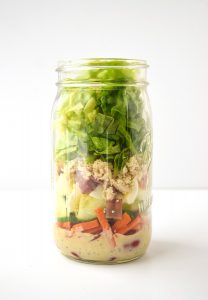
The reason this trend has taken off is that it makes taking a salad to work so much easier and fresher tasting. You don’t have to go out and buy a bunch of Mason jars, any large, wide-mouth, resealable jar will do, as long as it’s clean. Start by putting a simple vinegar-based salad dressing in the bottom. That type of dressing is not as temperature-sensitive as the creamier dressings. Also, it’s easy to make your own vinaigrette and always have fresh dressing suited to your tastes. Next, add topping like chickpeas, beans, grilled chicken, cooked salad shrimp, chopped veggies, cheese, nuts, seeds and fruits. On top, put lots of greens torn into bite-sized pieces. Make sure the lid is sealed tight. When it’s time to eat, just shake your jar and dump into a bowl. Make sure you stow a fork and maybe some crackers.
Roast Vegetables In Big Batches
We need to eat more vegetables, we all have heard it many times. And there’s a delicious and easy way to do that. Roasting vegetables that you can eat the rest of the week is a good way. Roasting adds flavor to almost all veggies. You have to spend a little time chopping, making sure they are cut into equal, bite-size pieces. This chopping takes a bit of time, which is why you want to do enough for the whole week, or at least a few meals.
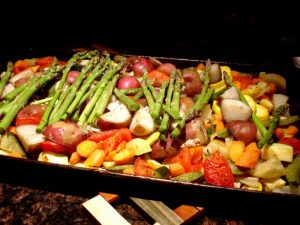
Once you finish chopping, most of the veggies can go into a big mixing bowl to which you add plenty of extra virgin olive oil and herbs and spices and toss them together. More delicate vegetables, like squash and greens like spinach and kale, can be spread out and coated with oil and seasonings before being added to the rest. Use a hot oven, about 450℉. Line a cookie or baking sheet with parchment paper and spread the veggies out evenly in a single layer. Depending on the mixture of vegetables, it will take 25 to 45 minutes in the oven. When they begin browning with crispy edges, they should be done. Those veggies can now be added to the dinner plate, a lunch salad or a breakfast scramble.
Keep A Well-Stocked Pantry
A pantry doesn’t have to be big with lots of canned goods, dry goods, and other foods ready to be used. If you don’t have a lot of space, a single cabinet shelf can suffice. The better you stock your pantry, the more flexibility you have, the more things you can make. How you stock that pantry will depend on your own tastes and the types of food you cook the most. Good things to keep in your pantry are canned beans (low sodium if possible), canned tuna, canned meat, canned vegetables, can tomatoes, tomato sauce and nut butter. Good snacks to keep in the pantry are dried fruits and various nuts. A variety of grains you should keep in the pantry are oats, rice and pasta.

